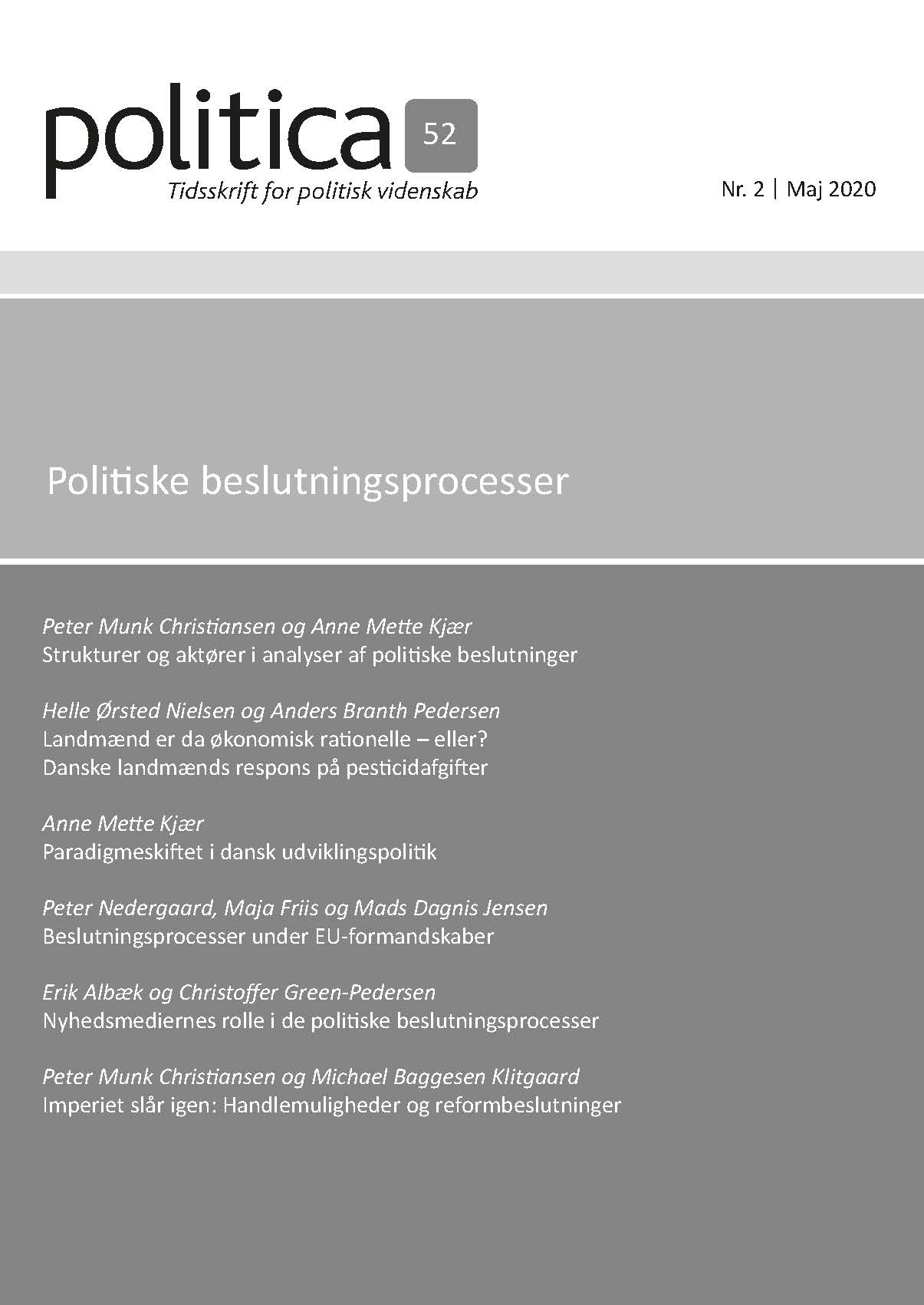Decision-making processes during EU presidencies
DOI:
https://doi.org/10.7146/politica.v52i2.130810Keywords:
EU presidency, Denmark, Poland, Cyprus, trio, Danish EU presidencyAbstract
This article analyses governmental decision-making processes during presidencies of the European Union (EU) from the outset of the planning to the end of the evaluation of the concluded presidency. The Polish, Danish and Cypriot presidencies in the Trio of 2011-2012 are compared by applying a Most Different Systems Design. The three presidencies represent member states that differ in political, administrative and geographical terms. In spite of these differences, considerable similarities can also be traced between the countries in terms of how they handled the presidency, especially how civil servants adapted to the different phases. However, there are also variations concerning the degree of centralization versus decentralization of the whole process, the degree of autonomy of individual civil servants, the degree of political involvement in the presidency process, and the type of evaluation carried out after the EU presidency had taken place. The article is based on interviews with more than 80 civil servants involved in the presidency process from the three countries over a period of nearly four years.





